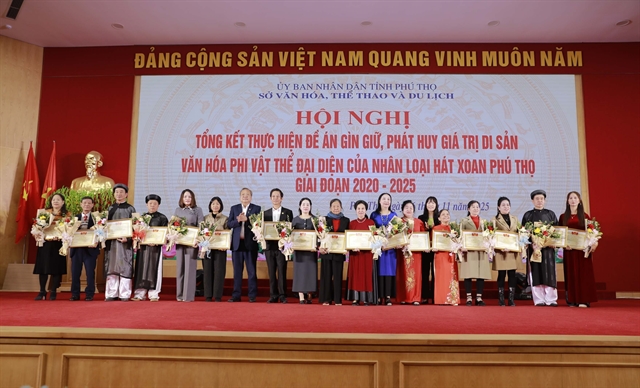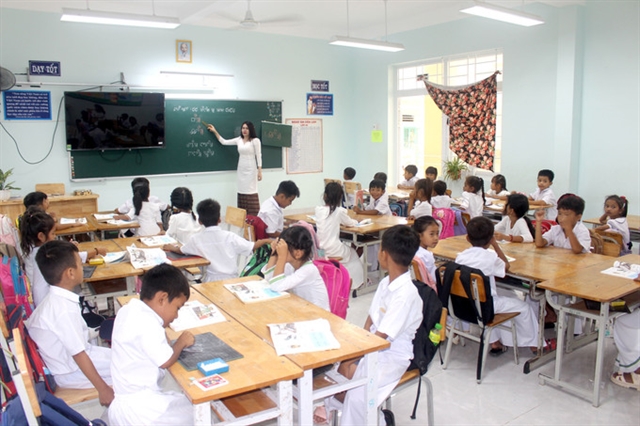 Life & Style
Life & Style

 |
| Many Chăm ethnic students say learning their mother tongue gives them greater confidence when approaching new knowledge. VNA/VNS Photo |
LÂM ĐỒNG Lâm Đồng Province is strengthening Chăm language education in primary schools, both to safeguard the community’s cultural heritage and to equip students with stronger language skills that support their Vietnamese learning and overall academic performance.
In a Chăm language class at Lâm Giang Primary School in Hàm Thuận Bắc Commune, fifth grader Thông Nữ Hạ Thuyên eagerly reads a short passage in Chăm script.
“Before, I could only speak Chăm at home, but now that I can learn it at school, I know how to read and write, and I’ve learned more about my people’s culture. Learning Chăm also makes it easier for me to understand Vietnamese,” she said.
Many Chăm students share this view, saying that learning their mother tongue gives them greater confidence when approaching new knowledge.
When certain objects or concepts in Vietnamese are difficult to imagine, they can better understand them through Chăm explanations by their teachers.
In the 2025 - 2026 academic year, Lâm Giang Primary School is home to 284 students in 10 classes across five grades, 99 per cent of whom are Chăm.
Following guidelines from the Ministry of Education and Training and instructions from the provincial government, the school has proactively developed a teaching plan tailored to local conditions and the needs of students and parents.
Principal Trần Văn Tiếng said the school continues offering Chăm language classes with two periods per week, supported by four experienced teachers.
Teacher Khê Thị Thanh Toán noted that each lesson ensures all four skills -- listening, speaking, reading, and writing -- are practised.
Learning Chăm not only helps students read and write their mother tongue but also strengthens their Vietnamese vocabulary and comprehension in other subjects.
At Lâm Hưng Primary School in Hàm Thuận Commune, three teachers teach Chăm to 150 students.
The school has also maintained two weekly Chăm lessons since the start of the school year.
“Teaching and learning Chăm here receive strong support from parents and community elders. Beyond reinforcing Vietnamese and other subjects, the class also preserves the language and culture of our people,” Vice Principal Thông Thị Ngà said.
In addition to classroom lessons, Lâm Hưng Primary School organises field trips, Chăm writing contests in collaboration with the Chăm Cultural Exhibition Centre, and activities during Chăm festivals, allowing students to engage directly with cultural heritage and foster a love for their language and script.
However, challenges remain. Many students are only familiar with spoken Chăm and struggle with reading and writing.
The Chăm script, with its unique characters and phonetic system, poses difficulties for learners.
Furthermore, new textbooks and teaching materials are not yet widely available.
To overcome this, the school creatively adapts existing teaching materials, employs visual aids, gathers local cultural objects, and uses multimedia tools to make lessons more engaging.
According to the provincial Department of Education and Training, for the 2025–2026 school year, 12 primary schools across Lâm Đồng will offer Chăm as an elective subject to 3,643 students in 142 classes from grades 1 to 5.
Sixty-one teachers have undergone Chăm language training and certification, with 51 directly teaching in classrooms.
Schools are implementing flexible teaching plans suited to local conditions and supported by adequate facilities.
Introducing the Chăm language into schools in Lâm Đồng not only affirms the sound policy of preserving ethnic cultural identity but also helps students strengthen their language abilities, laying a solid foundation for their education. - VNS




.jpg)